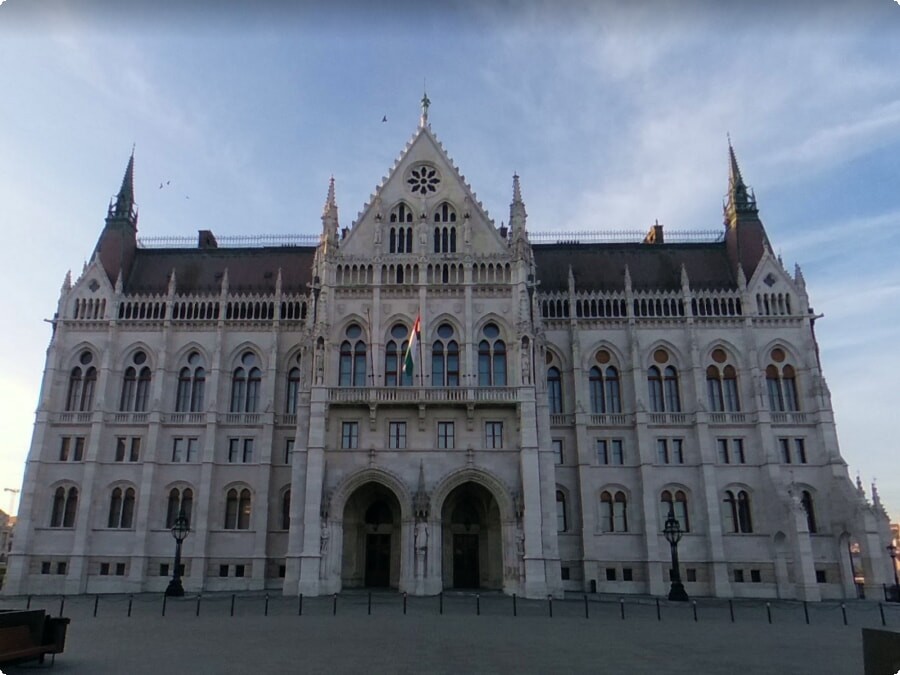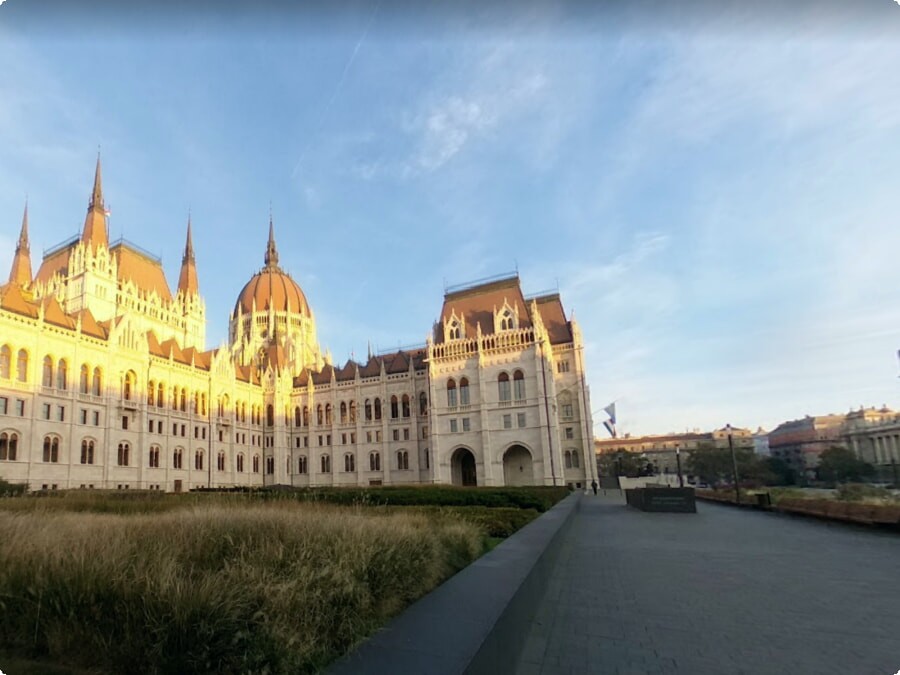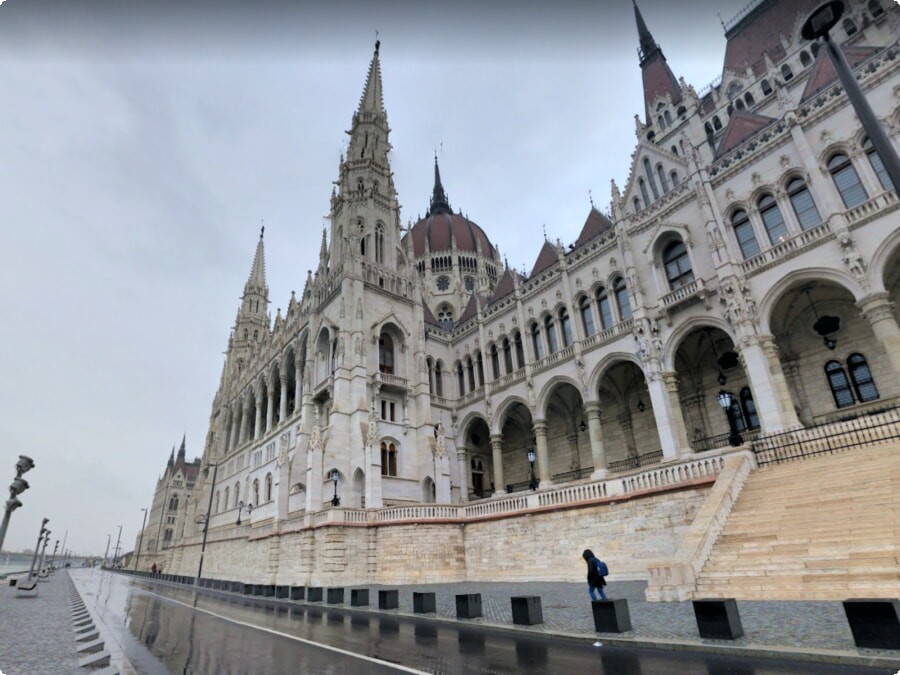Budapest From A to Z
Young Hungarian Designers Find Their Voice -- Dianne C. Brown made a significant contribution to the country she adopted, reviving interest in contemporary Hungarian art through her Sparks Gallery and WAMP design market.
The lion’s share of Budapest shopping is concentrated in the area along Falk Miksa from Jaszai Mari ter to Parliament, with antiques shops and art galleries everywhere.
Art Galleries
Budapest is an epic cultural hotspot, home to a plethora of architectural masterpieces and world-renowned museums. But it’s also one of Europe’s most interesting cities in terms of contemporary art, thanks to a vibrant and dynamic gallery scene.
Budapest’s gallery scene is not without its peaks and valleys, with many galleries opening only to struggle financially and close soon afterwards. However, recent interest from international collectors has given Budapest’s art scene a much-needed boost.
This is evident in the burgeoning number of art studios, galleries and auction houses, all vying for a share of the newfound market. Many of these new galleries are hybrid antique and contemporary ventures that feature anything from fine art to vintage books. But there are dedicated art galleries that focus solely on modern and contemporary works as well.
For those who want to discover the latest trends in Hungarian and Central Eastern European art, head to these trendsetting galleries in the capital.
Located in a former Socialist-era factory complex, this contemporary art gallery is home to an impressive artistic pool of talents. Its artists—including painters Zsolt Bodoni, Dora Juhasz and Marton Nemes and sculpturer Jozsef Bullas—speak in a common language of emotional expressionism. Their work is not only exhibited here but at the Gresham Four Seasons Hotel in downtown Budapest as well.
While the main focus is on painting, the gallery does show sculptural and graphic works as well. It is owned by the acclaimed Danish painter Hans Knoll, who has sister galleries in both Vienna and Budapest. Knoll Galeria is known for showing cutting-edge art from CEE countries and welcomes both controversial and established artists.
Hidden behind a nondescript entrance in an atmospheric neo-Renaissance courtyard, acb is a top Budapest gallery that specializes in the country’s neo avant-garde movement (fun fact: Nobel Prize-winning physicist Eugene Wigner lived here). It’s best known for contributing to foreign shows on the topic and representing artists such as the abstract painter Katalin Ladik and the eye-catching biomorphic shape-giver Gyula Varnai. It also regularly attends Paris Photo and other major art fairs.
It is impossible to get acquainted with the sights of Hungary in one day, as well as in a week, but you can see the maximum number of new places with the help of a rented car at one of the country's airports. For example, in Budapest airport you can rent a car from 17 euros per day, in Budapest downtown - from 18 euros per day.

Antiques
If you have a keen eye for antiques, Budapest’s quaint shops may pique your interest. Valifolkart, for example, sells everything you might think of when imagining Hungary’s history—antique furniture, vintage jewelry and classic silverware are all available here. The owner has a keen eye for historical items and is happy to share stories about the history behind every vintage piece.
The ornate Central Market Hall is another good place to shop for souvenirs, but this bustling marketplace also offers a range of local products. The stalls that line the food section are an excellent spot to find Hungarian staples and snacks. If you need a break from browsing the stalls, there are plenty of hangouts around the square to stop at. Café Picard serves breakfast, lunch and dinner specials while Baritsum serves strong coffee and creamy cakes.
Outside the hall, you’ll find a handful of high-end stores that specialize in Hungarian porcelain. The Herendi Chinaware Manufacturer Co is an especially reputable store that has been in business for more than 250 years and sells plates, vases and other decorative items. Other porcelain stores include Setabot, which carries European furniture and objets d’art, and Regisegek Porcelanok, which specializes in 17th- and 18th-century porcelain.
As you make your way through the streets, don’t forget to take a look at the city’s many art galleries. These museums offer intriguing exhibitions as well as fine art and antiques. Some, like the MissionArt Gallery, showcase works from the Nagybanya artist colony that helped modernize Hungarian art in the early 1900s, while others specialize in contemporary pieces.
Budapest is home to a developing, yet economically turbulent, gallery scene. Many galleries open, generate enthusiasm and then seem to fade from memory. Dedicated art galleries are trying to bolster their popularity, while other spaces are art-and-antique hybrids or try their hand at being auction houses.
Hungarian youthful designers—who are often self-taught—have also been working hard to establish a presence in the contemporary art scene. Many of these artists are embracing social media, which allows them to build an online following that is important to their success. The growth of this group has been a boon for the city’s art scene, as more people have access to new artwork.

Markets
Budapest’s market culture isn’t limited to the Central Market Hall. The city has a wide range of specialized markets scattered throughout the town where you can find food and gifts that are distinctly local. Many of these are small, artisanal and family-owned and can be found on the outskirts of the central business district, near the metro stations.
The largest of the city’s markets is the Central Market Hall, which is a large indoor market that is open daily and is a great place to go to pick up some fresh meats or souvenirs. This market is especially popular with locals, who often buy their groceries here and then head back to their homes to cook it all up into a hearty meal.
Other specialty markets include the Jewish Quarter Market, which is known for its wide variety of cheeses and other deli foods. The market is also home to a wide selection of kosher restaurants, so it’s a great place to go for a bite to eat while you shop.
A noodle market is another great choice for people who love to try new foods. The Nikolozny noodle market offers a variety of different noodles and a number of different sauces to go with them. This market is also a great option for vegetarians or vegans because it has a wide variety of foods that are gluten-free or dairy-free.
Lastly, a chocolate market is an excellent option for anyone who loves to indulge in sweets. The Chocolate and Coffee Fair is a popular event that features over 100 vendors selling everything from homemade chocolate to chocolate-covered snacks. The best part is that the entire fair is completely free, so you can come and enjoy some of the most delicious desserts in the city without spending a fortune.
The winter season in Budapest is a magical time where the city comes alive. Visitors from all over the world travel to the capital of Hungary in search of a travel experience that feels like a fairytale. The historic city delivers with a wide variety of seasonal treats including Christmas markets, outdoor ice skating rinks, and thermal baths.

Shopping
While the ornate grandeur of Budapest’s Austro-Hungarian and Ottoman past still looms large in streets, shops and cafes, homegrown modern culture is finding its voice. Budapest’s dining, nightlife, coffee, wine, and shopping scenes are brimming with creativity and innovation.
If you’re searching for a Budapest souvenir that will stand the test of time, opt for a handicraft from one of the many local artists. Look for watercolor paintings, charcoal drawings and black and white sketches that capture the energy of the city. Prices vary, with smaller images costing around $10 and larger ones running up to $50.
Budapest’s best and most famous pedestrianized shopping street runs from Vorosmarty Square to Great Market Hall, with everything from Zara and Mango to H&M on offer. The best place to power-browse in a concentrated area, however, is along Falk Miksa (which runs from Jaszai Mari ter to the parliament). Here you’ll find a mix of the usual suspects plus an excellent selection of independent galleries and boutiques.
The charming, two-story Paloma store—part shop, part art gallery and part exhibition space—is a must-visit for fashion lovers. This quirky boutique offers a range of homegrown Hungarian designer clothing, jewelry, and accessories in a setting that’s equal parts cool and eclectic.

Another must-visit is Laszlo Vass, a traditional shoemaker who’s still making handmade leather shoes using the same techniques that his ancestors did. His shop is a window into Hungary’s rich craftsmanship heritage and makes for a highly-rewarding shopping experience.
If you’re not a fan of high-end shopping, the West End Center has a large variety of stores that will appeal to travelers on almost any budget. This massive mall is one of Europe’s can’t-miss shopping institutions and conveniently located near Nyugati Station.
Tokaji, the famous sweet dessert wine mentioned in the national anthem, can be found all over the city. But to make sure you’re getting the very best, head to the Bacchus Borkereskedes Store at 23 Vaci Street. This is a family-owned business that’s been in operation for over a century. They’ll be happy to help you select the perfect bottle.